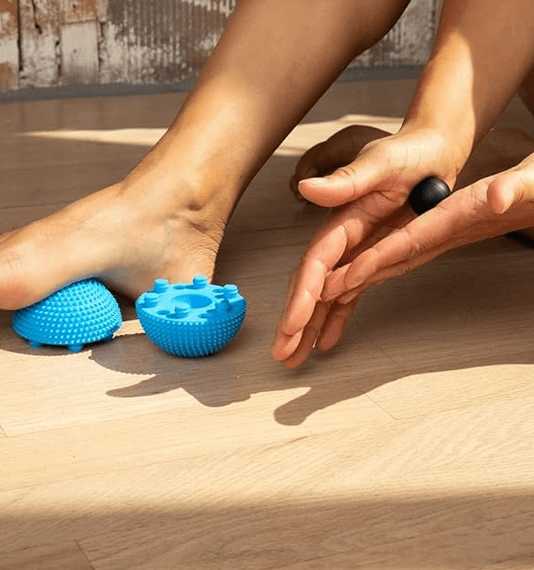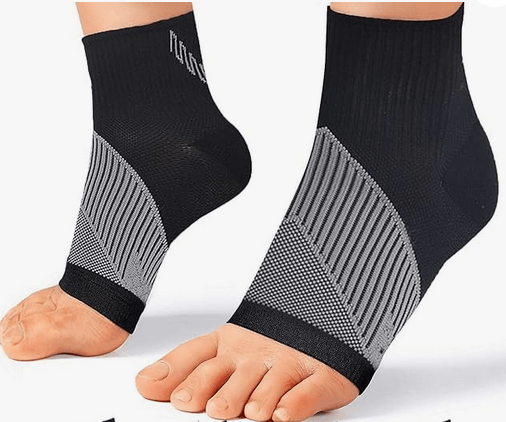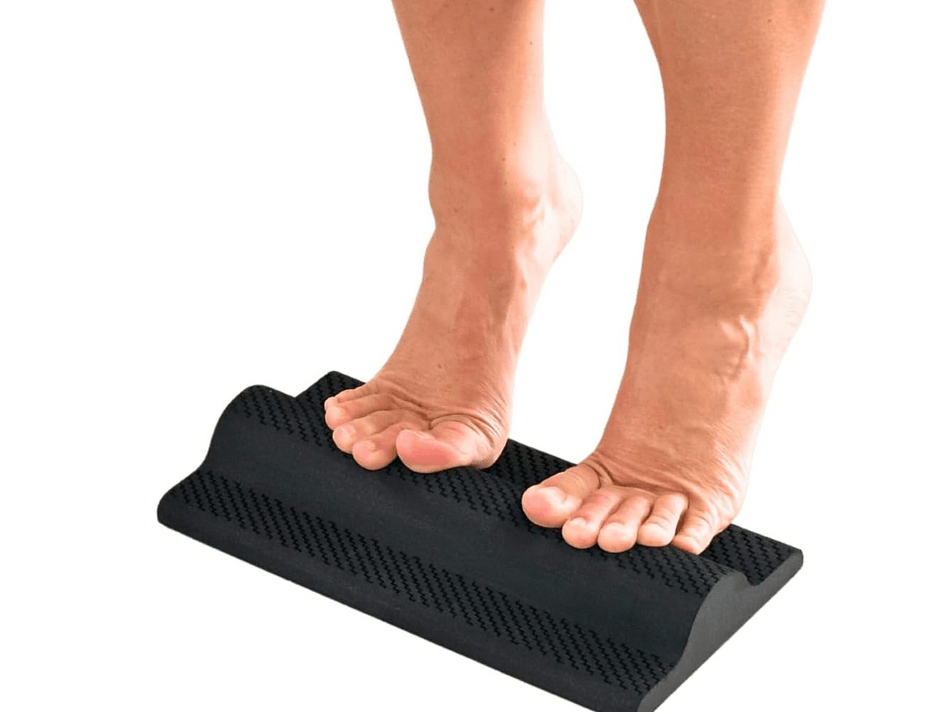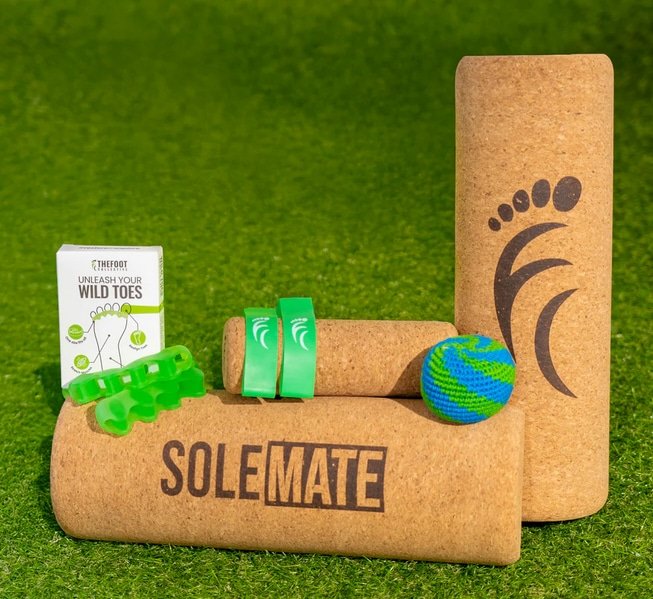Heal Plantar Fasciitis: Effective Techniques and Solutions
Plantar fasciitis has got to be one of the most frustrating conditions that I see. I makes getting out of bed seem unthinkable each day, it stops people from running, walking, hiking, working…
It can linger on much longer than people would like and it can be frustrating to find solutions that work for you.
Plantar fasciitis exists on a spectrum from pretty sore through to “I tore my Plantar Fascia and now I need to wear a moon boot for 6 weeks.” Because of this, it is important to have a pro check you over. The vast majority of Plantar fasciitis won’t need a moon boot but it does happen and you don’t want to delay your healing if you’re in that minority.
So. What can you do about it? How do you heal your Plantar fasciitis?
First: How do you know it is plantar fasciitis?
People with Plantar fasciitis often experience:
· Pain the in the bottom of the foot in the arch or the heel.
· The first few steps in the morning or after resting long periods are often really painful
· Pain can often improve with movement, but when you do too much it can also start to hurt more
· It can hurt to touch and press on the bottom of the feel and the arch
· Tightness in the foot, Achilles tendon and calf
If you’re getting any of the following symptoms, it might seem like Plantar faccitis but it is likely something else is going on:
· Pain on the outer side (lateral side) of the foot
· Nerve symptoms like burning, tingling or numbness
· Swelling, redness and warmth
· Pain that doesn’t ease or steadily gets worse with movement
· Pain in both feet, especially when you or a family member has a history of inflammatory conditions like rheumatoid arthritis or ankylosing spondylitis.
If you’re pretty sure it’s Plantar fasciitis, it’s best to get some specific advice for you, your body and your level of activity. The following techniques and tools are generalised and might not be right for everyone.
Stretches, strength, massage
Starting you day with these foot strength and mobility drills can be helpful.
A lot of people get relief from consistent stretching of their foot and calf muscles throughout the day, every day
If you’re not also working your big toe strength, you’re missing a huge piece of the “healing your Plantar fasciitis” puzzle
Use a ball, a can or a frozen water bottle to help massage out the arch and the ball of your feel. Avoid putting direct pressure on the heel bone when doing this.
Load management
There are heaps of possible reasons for you getting Plantar fasciitis but a big cause for a lot of people is a load management problem.
This is also one of the most important things to keep in mind when getting back into the things your Plantar fasciitis has stopped you doing.
Load management means managing the amount of work your injured body part is doing.
In the case of Plantar fasciitis , we could look at is as the amount of steps you take each day, the weight you carry in a heavy backpack, the speed you’re walking at or the incline you walk or run on. All of these change the foot’s workload and can affect how it feels.
It’s unlikely you can go from complete rest to getting right back into your normal level of activity without having a pain flare up.
For a lot of people, that means scaling right back and slowly increasing the workload bit by bit. This way, if you go too far and have another flare up you will be able to settle the symptoms more easily and get back on track more quickly.
It can be helpful to keep a log or diary of your activity and how your foot feels during it, later that day, the next morning and later the next day to see a trend in activity and symptoms.
Diet
There is a correlation between people’s food sensitivities, delayed healing response and musculoskeletal pain but this one can be hard to detect. Some people with food sensitivities and allergies don’t get symptoms until 2-3 days after they’ve eaten, making it hard to link the two events.
If you’re worried about gluten being a cause of problems, it’s best to get it investigated with a doctor to make sure you don’t have celiac disease as missing this can cause big health issues if it’s left untreated.
Speak to your GP or seek out a university qualified nutrition practitioner or dietician to help with this one.
Weight loss
This is just one small piece of the puzzle and plenty of people who are in smaller bodies have Plantar fasciitis too.
For people in bigger bodies, the link between Plantar fasciitis pain and body weight isn’t just about the increased weight on the sore foot.
Reducing body weight also reduces the fat cells in the plantar fascia, making it more flexible and able to do its job.
Mindset
There’s no doubt about it- Plantar fasciitis can be frustrating. It can take a lot longer to resolve than you would like, but be encouraged that it is something people recover from all the time.
The key is to maintain a positive and hopeful outlook. It’s ok to be frustrated from time to time but pick yourself up again and keep working on it. If others can beat it, you can beat it.
Get support when you need it, even if the support is a professional telling you you’re on the right track and to keep going.
In a lot of cases it’s a marathon, not a sprint, but you’ve overcome 100% of the challenges in your past so you can get through this one too.
Equipment and tools to help you heal
Some people get a lot of relief from wearing night splints and Strassburg Socks to stretch their plantar fascia while they sleep. This can reduce the pain you experience first thing in the morning.
This isn’t for everyone, they can be uncomfortable and hard to sleep in or fall down to be less effective.
When it works, it works but when it doesn’t its useless.
The Fasciitis Fighter is a tool that can help with strengthening the toe and foot muscles to relieve symptoms of Plantar fasciitis.
It can be used instead of a rolled up towel to do the toe elevated heel raises recommended a the beginning of this article. You can also use it to help stretch the calf and foot muscles.
The Foot Collective has a fantastic kit available with instructional videos to follow. This kit is recommended for general foot strength and mobility and is great for preventing foot issues.
They generally encourage barefoot living and while I’m a fan of this, it isn’t necessarily helpful for someone who has extreme foot pain when walking barefoot.
If this is you, it’s something to consider after the most severe symptoms have begin to pass rather than at the beginning of your healing.
When your Plantar fasciitis is at its worst, it can be helpful to wear comfortable shoes as much as possible, including when you’re relaxing at home.
As with all footwear, people have different opinions but Archies Thongs, Oofas Slides and Birkenstock sandals all give foot and arch support while providing some nice cushioning for the foot.







